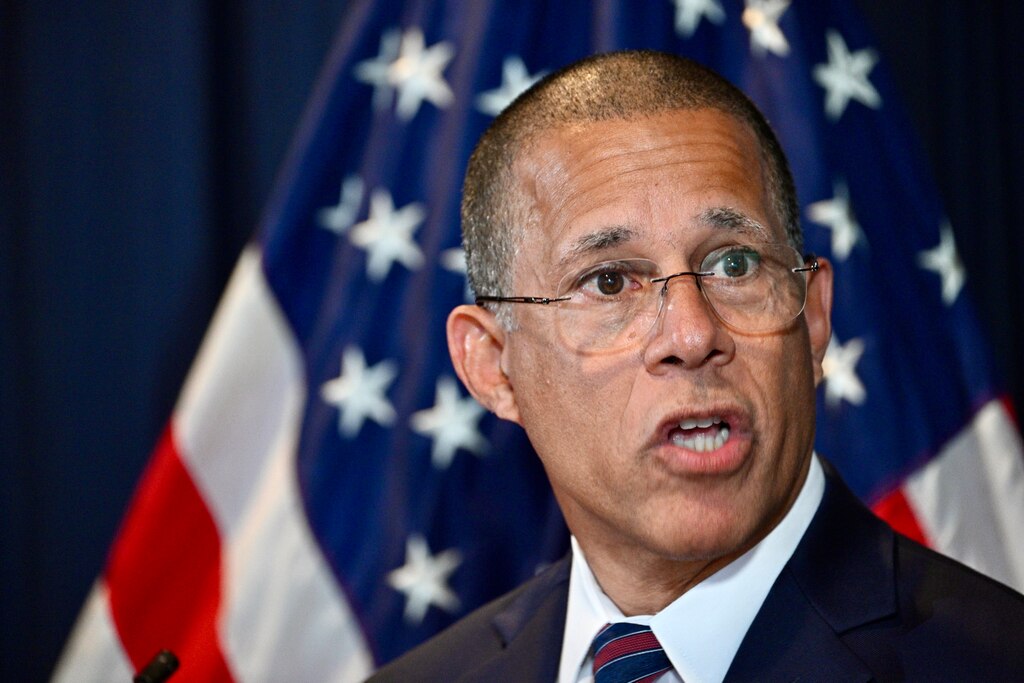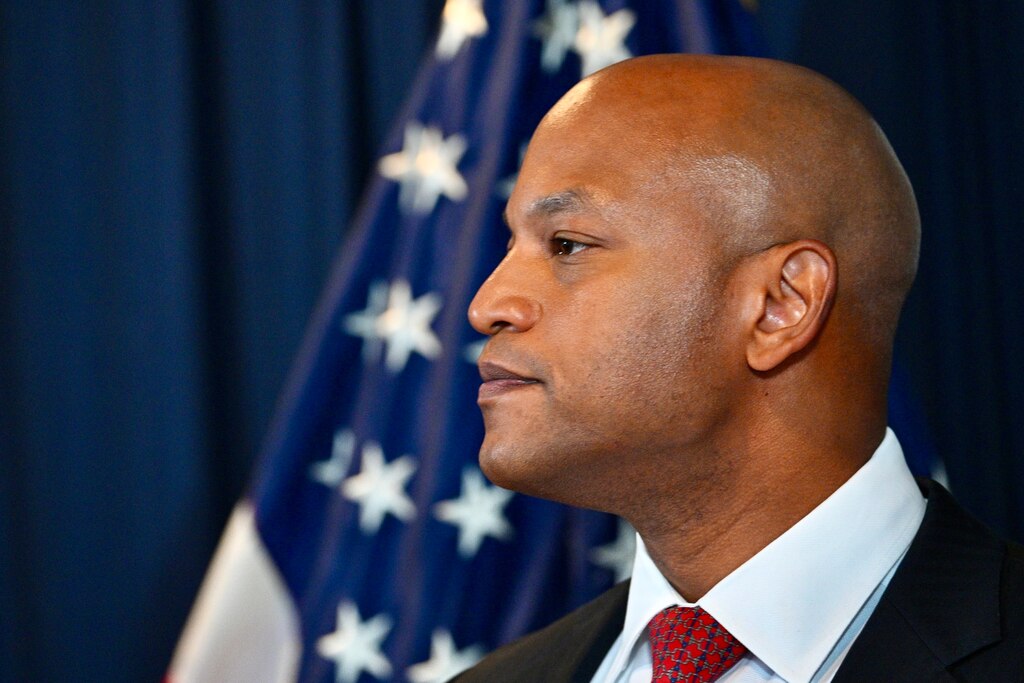Maryland’s state government is suing the owner and manager of the Dali cargo ship that smashed into the Francis Scott Key Bridge earlier this year, sending it collapsing into the Patapsco River and killing six construction workers.
The state alleges that the government itself and the people of Maryland have suffered massive losses from the bridge collapse, and that it was caused by negligence and shortcuts by the Dali’s crew, owner and manager.
“A bridge was destroyed. A port was closed. Communities were shattered. The lives of six Marylanders were lost and those of their families were irrevocably changed. And the state of Maryland lost an iconic symbol of strength and prosperity, threatening the state’s economy and leaving taxpayers on the hook for the gross negligence of the Dali’s owner and operator,” Maryland Attorney General Anthony Brown said Tuesday.
“But that injustice — leaving Marylanders to pay for this tragedy — cannot and will not stand,” Brown added.
The Baltimore Banner thanks its sponsors. Become one.
With a filing in federal court Tuesday morning, Maryland joined a growing list of parties seeking monetary damages from the ship’s owner, Grace Ocean Private Limited, and its manager, Synergy Marine Group.
Brown and Gov. Wes Moore, both Democrats, made the case during a news conference that the state’s economy and people have suffered and that those two companies should pay.
“The grievous impact” of that conduct on the state and its residents, environment and economy “cannot be overstated,” the state’s lawyers wrote in their filing, nearly six months after the deadly crash.
The court should hold the responsible parties accountable “for their reckless conduct, negligence, mismanagement, and incompetency,” the filing reads.
Earlier this year, Grace Ocean Private and Synergy Marine filed a case in federal court seeking to restrict their exposure in the catastrophe to $43.67 million. That amount represents the estimated value of the ship and its cargo.
The Baltimore Banner thanks its sponsors. Become one.
Brown said that the companies’ efforts to limit their liability, based on 1800s-era maritime laws, should be rebuffed by the court. Both are massive global companies that have the resources to pay and are responsible for the Dali’s flaws that led to the crash, he said.
“They so quickly, after their gross negligence and reckless conduct, ran to the courthouse steps to limit their liability based on a law passed 150 years ago when you had wooden ships and crowded ports,” Brown said.
Brown said the state would demonstrate that the companies “knew, or should have known” that the Dali was unseaworthy.

Darrell Wilson, a spokesman for Synergy Marine and Grace Ocean Private, said in a statement Tuesday that the state’s filing was anticipated, given that Tuesday is the deadline to file claims in the case.
“The owner and manager will have no further comment on the merits of any claim at this time, but we do look forward to our day in court to set the record straight,” he said.
The Baltimore Banner thanks its sponsors. Become one.
The state is the latest party to make a claim in the case, joining Baltimore’s government, the families of construction workers who were killed, some businesses who said they were affected and the U.S. Department of Justice, which alleges that negligence and mismanagement led to the vessel being unseaworthy.
Baltimore County also filed a claim on Tuesday, detailing the county resources that went into the response and damages to the county’s economy, environment and transportation systems.
The state is asking the court to deny the request from the Dali’s owner and manager to limit their liability, and instead to make a massive award to the state to compensate for the direct and indirect costs of the damage the crash caused.
The state didn’t suggest a dollar figure of damages sought, but instead offered a long list of financial damages, starting with the cost to rebuild the Key Bridge — previously estimated to be nearly $2 billion.
Other damages the state is seeking payment for include the cost of state agencies’ response to the bridge collapse, lost toll revenue, damage to the river and wetlands, wear and tear on roads now bearing additional traffic, punitive damages and more.
The Baltimore Banner thanks its sponsors. Become one.
In its filing, the state argues not only that the Dali’s owner and manager allowed an unseaworthy vessel to depart the Port of Baltimore on March 26, but that the crash and bridge collapse also resulted in illegal discharge of oil and other pollutants, and that the ship being lodged in the river was an illegal obstruction of the waterway.
“Please, hear me loud and clear: What happened in the early morning of March 26 should never have happened,” Moore said. “A bridge that was used every day by thousands of vehicles every single day should still be here right now. A key artery to the Port of Baltimore, which helped move billions of dollars of freight every single year, should still be here right now. And the six victims of the collapse should all be here right now.”

Many of the arguments made by the state mirror a claim filed by the U.S. Department of Justice last week, outlining a series of shortcuts and work-arounds that left the Dali and its crew incapable of safely managing the ship down the river and out to the Chesapeake Bay.
The state’s claim notes that the Dali lost power twice while at the dock before departing Baltimore, but did not report the outages to authorities as required.
After the Dali left its berth in the middle of the night on March 26, it lost power again due to a loose connection in the electrical switchboard, causing a loss of propulsion and steering, the state wrote. After the power flickered on briefly, it went out again.
The Baltimore Banner thanks its sponsors. Become one.
“The defects in the DALI’s equipment that caused these repeated blackouts also compromised the ship’s ability to restore power and caused her essential navigation and safety capabilities to likewise fail,” the state wrote.
Bay pilots who were aboard the ship to direct it through the tricky shipping channel ordered the Dali crew to engage the bow thruster to steer away from the bridge, but were told it was “unavailable,” the state wrote. And an order from the pilots to drop the ship’s anchor was thwarted because it wasn’t ready to be released, the state wrote.
With no way to steer or slow the ship, it crashed into the Key Bridge, the state wrote.
“As a result of mismanagement, disinterest, and/or incompetency by the DALI’s owner and operator, many of the ship’s backup systems were removed, inoperable, and/or intentionally overridden,” the state’s lawyers wrote.

Earlier this year, the state hired multiple private law firms to help with the case, since it’s beyond the scope of expertise of lawyers in the Office of the Attorney General. The private law firms will be paid a percentage of any money that’s won for the state.
The Baltimore Banner thanks its sponsors. Become one.
As the litigation plays out, investigations are still in progress by the National Transportation Safety Board and the FBI. FBI agents and Coast Guard officials on Saturday boarded a ship in Baltimore that’s also managed by Synergy Marine but did not disclose the purpose of the action aboard the Maersk Saltoro, other than to say it was part of an investigation.
And efforts continue to get Congress to agree to President Joe Biden’s pledge that the federal government would pay the full cost of rebuilding the bridge. Moore said more than 125 members of Congress have been contacted and he’s confident that they believe that the bridge is “bigger than politics” and will come through with funding.




Comments
Welcome to The Banner's subscriber-only commenting community. Please review our community guidelines.